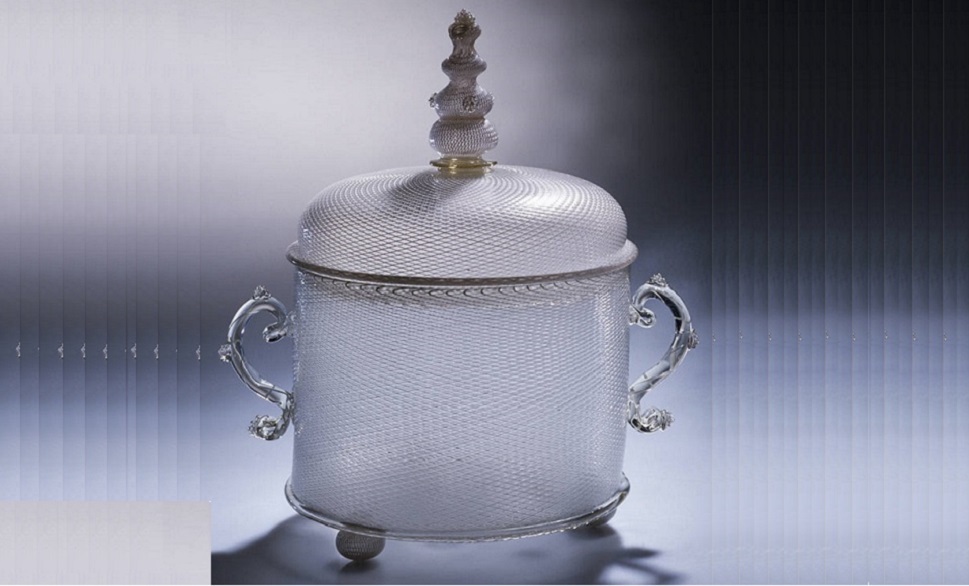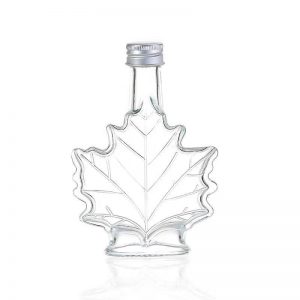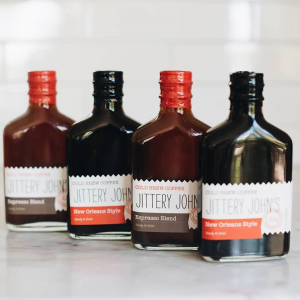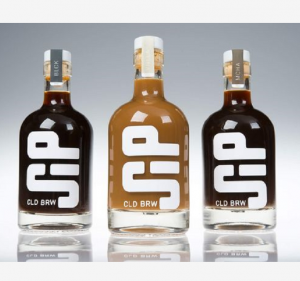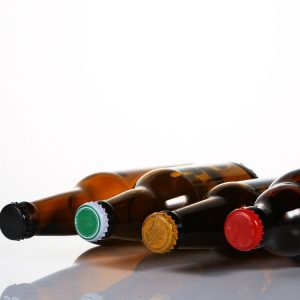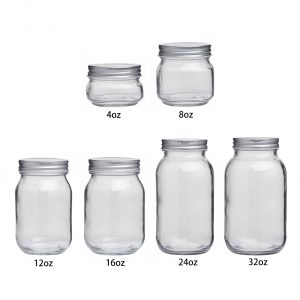To determining a glass bottle’s age can be a challenge.
People need to have the knowledge of glass production techniques and strategic markings. The following will discuss how to tell the age of a glass bottle so you can browse through your next estate sale with confidence. When visiting an estate sale, shoppers are often intrigued by antique bottles.
MC Glass Bottle Company has a growing concern many consumers to develop a future glass bottle packaging, knowing the marketing trends which color can reflect your brand and what elements your brand strands for. We got some hints from antique glass bottles.
Antique Glass Bottle Production
When determining the approximate age of antique bottles, the first thing to know is how the glass bottle was produced. From the mid-19th century through the early 20th century, most glass bottles took shape under a glassblower’s watchful eye. However, in the mid-20th century, automation took over the glass bottle industry.
In the 1800s, glass blowing was a necessary profession. The skilled glassblower carefully blew molten glass into a wood or iron mold. Once the hot compound cooled, the artisan applied the finishing touches, including crafting the bottle lip. Bottle-making was a labor-intensive craft in the 1800s. Finding a glass-blown collectible from that era is a bottle digger’s dream.
Machine Automation
In 1892, the bottle-making game completely changed with the invention of the semi-automatic bottle machine. Generally called the automatic bottle machine, this machine molded the bottle lip along with the bottle’s body. Thus, there was no longer a need to hand-finish the bottles.
Although the machine-made bottles are more uniform in appearance, collectors find them much less interesting than earlier hand-blown glass bottles. On average, the machine-made bottles are worth considerably less than their hand-blown counterparts.
Types of Antique Bottles
The antique glass bottle universe contains bottles of many shapes, sizes, and colors. Smooth-based, embossed, private mold, and other bottle effects provide insights that may be useful in determining an old glass bottle’s age.
A glass bottle’s embossing effects often help to provide positive proof of the bottle’s age. The embossing may be located on any part of the bottle. Multiple types of embossing effects may appear on a single bottle.
You can often determine a bottle’s intended use by viewing its embossing effects. In addition, if a company embossed its name on bottles for many decades, you can determine the time period during which the company produced that type of bottle. You must run the bottle through several manufacturing-related questions to accurately determine the bottle’s age.
Colored Glass Bottles
Antique bottles often display a lovely palette of muted colors that you do not often see in the modern era. Although color is an important descriptor of the bottle’s appearance, there are three reasons why color is not always useful in determining the bottle’s type or age.
First, glass color is not directly related to a specific type of glass. Color also has no relation to the glass bottle’s production method. Finally, color is only marginally related to a glass object’s function.
However, antique bottle color can give hints to the approximate age of the bottle. The following are notable glass colors and the eras in which they were most popular:
- Amber Glass: Mostly in use from the late 18th century through the mid-20th century
- Aqua Glass: Mostly in use between the 1850s to 1880s
- Black Glass: Early 17th century European use as well as use from the 1840s to 1880s
“True” Blue Glass: Mostly in use from the 1840s through the 1930s (various bottle types) - Clear (or colorless) Glass: Originally appeared around the 1870s
- Greens (non-olive) and Blue-greens Glass: Mostly made in the 19th or early 20th century
- Oliver Greens/Ambers Glass: Mostly in use in the 19th century and earlier
- Opaque White or Milk Glass: Mostly in use from the 1870s through the mid-20th century
- Purple/Amethyst/Red Glass: Mostly in use from the 1840s to the early 1880s
- Clear Glass Bottles
- Colorless (or clear) glass bottles had limited circulation before the 1870s. The bottles gradually became more prevalent during the last three decades of the 19th century. The emergence of automatic bottle machines in the early 20th century led to clear glass bottles’ increased popularity.
- Glass Bottle Shapes
- A specific bottle’s shape generally indicates the bottle’s use or type of contents. Most antique bottle styles and shapes were tied to a certain type of product. For example, beer bottles, soda bottles, and mineral water bottles were associated with specific bottle shapes. With rare exceptions, bottles of those shapes weren’t used for other products.
- Glass Bottles from Private Molds
- During the mid-19th century, private bottle molds came into vogue. Medicine bottle manufacturers and household goods suppliers ordered specially molded glass bottles. Soda and mineral water companies also jumped on the private mold bandwagon.
Whether the manufacturer wanted a uniquely designed bottle or desired embossing embellishments, every glass company was happy to oblige. In fact, it was around this time that embossed bottles became very popular.
Antique Bottle Bases
The bottle base provides clues to what the bottle was used for and the bottle’s age. Different types of bottles were used for different items and made in different eras. Note that medicine, bitters, liquor, and spirit bottles varied in their base styles. By studying the bottle’s base, you can get some much-needed information for your bottle dating.
Push-up Base
Wine bottles often feature this common bottle base style. Turn the bottle over, and you’ll see that the center of the bottle is pushed upward into the bottle base. This enables undesirable wine sediment to collect in a ridge around the bottle base.
The push-up base originated in England in the 1820s, when a push-up base mold part became part of the bottle-making process.
Dark green glass wine bottles were the first to incorporate the push-up base. Bottle makers in numerous countries eventually adopted the push-up base for use with most bottle types.
Open Pontil Bottle Base
Before 1855, most bottles displayed an open “pontil mark” on the base of the bottle. Glassblowers used an iron punty rod to hold the bottle. They would secure the punty rod to the bottom of the bottle. When they finished creating the bottle, they would snap the punty rod off of the bottle, creating the pontil mark. The rough-looking open pontil mark, or pontil scar, looks like an irregular, colorless hole in the bottle’s base.
Iron Pontil Bottle Base
The iron pontil bottle also has an open pontil scar. However, instead of the mark being colorless, the iron pontil bottle displays a reddish or brownish residue at the break-off point. The color is likely due to the color of the iron punty rod.
Most iron pontil bottles were produced from 1845 through the mid-1860s. However, there is evidence that these bottles may date from the 1830s until about 1870.
Key Mold Bottle Base
From 1850 to 1870, key mold bottle bases became relatively common. Bottle bases with key molds feature a semi-circle crafted into the bottom of the bottle. Some key mold bottles display smooth bases, while those made before 1855 display a pontil scar.
Owens Ring Bottle Base
The first machine-produced bottles displayed the Owens ring. This feature was named after the Owens Glass Company, creator of the automatic bottle machine. The Owens ring was symmetrical and did not leave a jagged mark like the earlier punty rod.
Bottles with Owens rings first appeared around 1904. By 1917, the Owens automatic bottle machine figured in production of half of the U.S.-made glass containers.
Machine-Made Bottle Base
The hand-blown bottle era ended during the mid-1920s when machinery took over all bottle production. Note that all machine-produced bottles have their mold seams go completely upward over the bottle’s lip.
If the bottle was produced on the Owens Automatic Bottle Machine, it also exhibits a suction scar on its base. The scar often has a feathering effect that results from a dull mold blade or a poorly fitting or worn mold. That’s the telltale sign of an Owens machine-produced bottle.
For reference,, the Owens rings bottles were first produced about 1904. The Owens bottles with suction scars (and feathering effects) did not appear until 1905, and were mostly seen after 1910.
Glass Bottle Markings
Though the bottle’s shape may tell you about its intended use, and the bottle’s color can help with an approximate age, nothing will help you more in your bottle dating than the bottle’s markings. Examine older bottles for any evidence of the glass manufacturer.
Search for the company initials, a single letter, emblem, or trademark. In some cases, antique bottles only contain a numeric sequence. If you can’t find anything except the numbers, it will be very difficult to determine the bottle’s manufacturer and complete the old bottle identification.
Base of the Bottle Markings
Bottles that display letters and numbers on their bases were likely made anywhere from the late 19th century to the modern era. In most cases, one- or two-digit numbers are actually mold numbers that indicate the specific bottle mold or section in an automatic bottle machine. If numerous molds were identical, each one received its own number. Base numbers also indicate bottle styles or shapes, manufacturing dates, or factory location codes.
Soda bottles from the Owens-Illinois Glass Company display G-numbers on their bases. These numbers were codes for a certain bottle design, regardless of the bottle color or soda brand. For reference, the Owens-Illinois Glass Company name resulted from the 1929 merger between the Owens Bottle Company (of Owens Automatic Bottle Machine fame) and Illinois Glass Company.
Bottles for whiskey and other spirits often show liquor bottle permit numbers on their bases to comply with federal law. The bases also display the glass maker’s trademark and the date code. Liquor bottles often have “D-numbers” on their bases, signifying distillery identification codes.
Maker’s Mark
Brand names, trademarks, and other identifying marks provide useful data in determining an old bottle’s age. When the mark’s owner is established and clearer dates can be matched to the bottle’s use, the mark can help to positively date the piece. A well-defined maker’s mark can help you establish an old bottle’s age. Some glass containers, such as canning jars, have a prominent maker’s mark. Other antique bottles lack this telltale identifier.
Embossed Markings
Typical embossed marks include a maker’s mark or letters on the bottle’s side or base. You may also see mold lines or machine marks.
Missing letters, uneven spacing, or other embossing errors provide clues to a bottle’s age. Specifically, collectible Coca Cola bottles and milk bottles often include letters or marks that indicate the bottle’s source. These marks may be useful in learning how old the bottle is.
Mold Seams
During mold-sourced bottle production, the bottle’s removal from the mold resulted in a hard-to-see seam in the glass. Much of the time, the mold seam height indicates how old the bottle is. Machine-produced bottles from 1905 through the 1920s displayed higher, thicker mold seams compared to later machine-made bottles. As technology progressed, the seams grew thinner until they reached a hair’s thickness.
If the bottle seam goes to the lip’s top, the bottle is likely a machine-produced bottle from 1910 to the modern era. If the seam goes to the neck’s top but stops before the lip, the bottle was likely produced from 1880 to 1910.
However, entire bottle classes stand as exceptions to this rule. For example, mid- to late-19th century fruit jars and sheared top bottles have their own mold seam designs.
Bottle Lips
You can determine the approximate age of an old bottle just based on its lip. After the glassblower removed the bottle from the mold, he affixed a hot glass lip to the bottle’s neck. Next, he crafted the applied lip into the correct shape. Pre-1870 bottle lips have a crude finish, while those made after 1880 have more uniformity, due to the creation of a lipping tool. This development set the stage for mass bottle production.
The following are the types of applied lips used in the 19th and early 20th centuries. Use this lip guide to help you determine the approximate age of any old bottles you find.
- 1830-1850: Flared lip
- 1830-1850: Sheared lip
- 1840-1870: Applied round band
- 1840-1870: Applied square band
- 1840-1870: Applied taper
- 1840-1870: Applied blob
- 1840-1870: Applied double collar
- 1840-1860: In-rolled lip
- 1870-1910: Tooled with applied ring
- 1860-1910: Early screw cap with ground lip
Bottle Closures
Old bottle manufacturers finished their bottles with three general types of tops or closures. A bottle closure protected the bottle’s contents from spilling, dust, and evaporation. Generally speaking, the bottle’s general finish and closure will be similar in form and function. Viewing bottle tops may be useful in your bottle dating work.
Cork Top
A cork top, in use since the 18th century, functioned as a stopper. The pliable cork could be forced into the bottle’s top, sealing it regardless of the bottle’s shape. When bottling carbonated beverages, the operator had to secure the cork so the carbonation from the beverage wouldn’t loosen it. Failure to do that often resulted in carbonation leaking and even popping the cork prior to beverage consumption. To avoid this issue, the operator wrapped strong cord or wiring around the bottle’s upper neck and cork.
When consumers remove cork tops, the tops have a tendency to break and crumble, making it difficult to remove the cork in one piece. This continues to be an issue with the sheared top wine bottles in use today. To remedy this issue, inventors have developed non-destructive cork-removing implements.
Crown Top
These Victorian-inspired tops came onto the market in the early 1890s. By 1915, most bottle manufacturers had adopted this style top.
Looking downward at the bottle, the crown top is circular with jagged edges and must be opened with a bottle opener. Beer bottles and soda bottles typically contain a crown top.
Crown-topped bottles enjoyed wide distribution during the machine-made bottle era. Their popularity lasted through the 1960s when screw tops came onto the market.
Screw Top
Invented in the early 19th century, screw tops weren’t produced with any uniform standards. As a result, they weren’t widely used until machine-produced bottles became commonplace in the 1900s.
Modern bottling production methods dictate the use of screw tops on soda and beer bottles. These 20th-century screw-topped bottles have very little value.
To distinguish an early screw-topped bottle, look for a roughly ground lip. In addition, the earlier bottle does not display a mold seam running through the lip.
Antique Bottles VS. Copycat Bottles
In the early 20th century, glass bottle manufacturers began using clear glass instead of aqua glass. Embossing also diminished in importance. Food manufacturers demanded more uniform containers, gradually leading to the disappearance of production deviations.
Copycat Glass Bottles
Since about 1930, manufacturers have flooded the market with reproductions that mimic antique glass bottles. The bottle’s shape and texture may be similar to those of a hand-blown glass bottle. These appealing characteristics give it an antique feel and encourage the reuse of this bottle.
When determining if you have an antique bottle or a copycat, look at all of the determiners outlined in this article. Beware of copycat bottles that feature molded pontil marks. Some newly produced bottles display jagged marks that look authentic.
If a bottle displays a pre-1850 date or very bold glass colors, it’s probably a reproduction. If you see a huge number of glass impurities or the glass itself is heavy with a distorted shape, it’s a reproduction. An antique bottle maker would have gone to considerable lengths to minimize these issues.
Conclusion
Before you design the actural design of your glass bottle, make sure you can send the right signals to your target audience. Please contact our expertises knowing how to develop unique glass bottle manufacturers, transferring your concepts to a real glass bottle meet all your requirement making fancy glass bottles.

